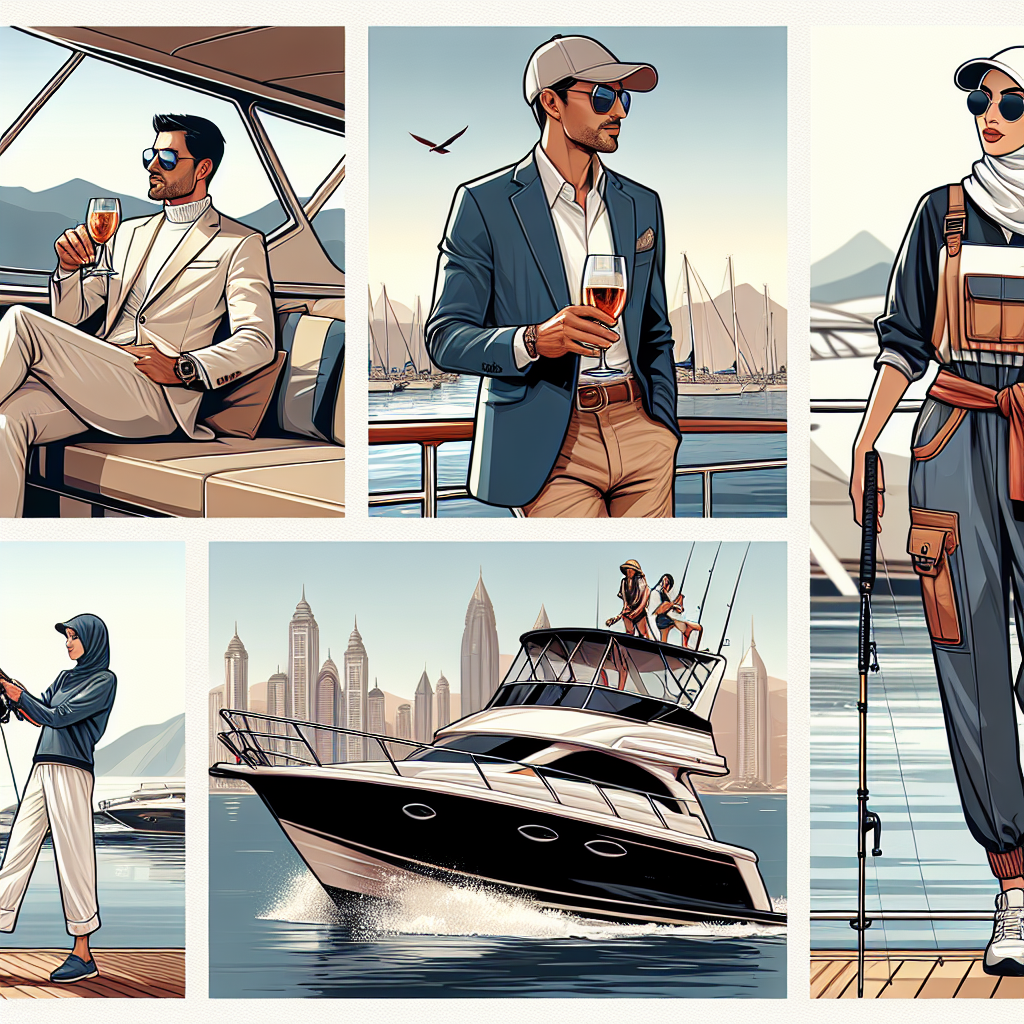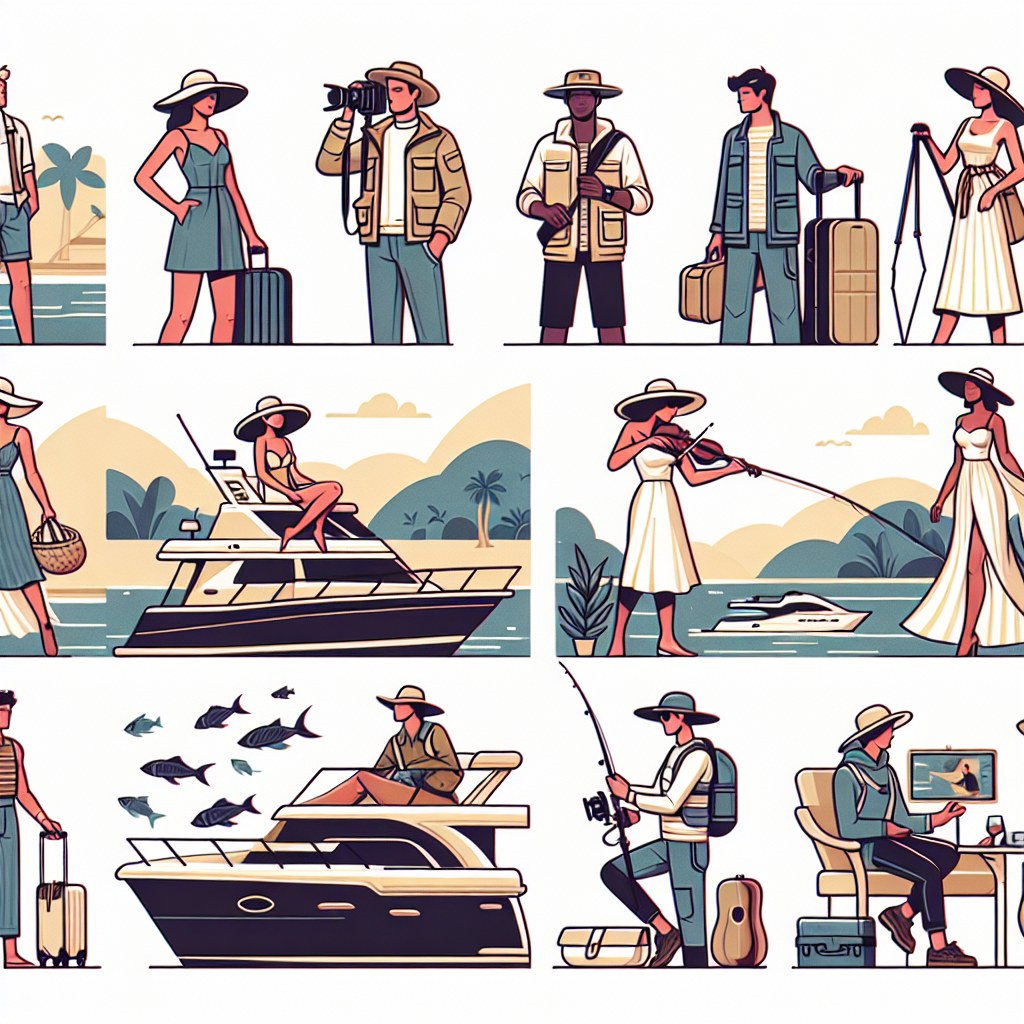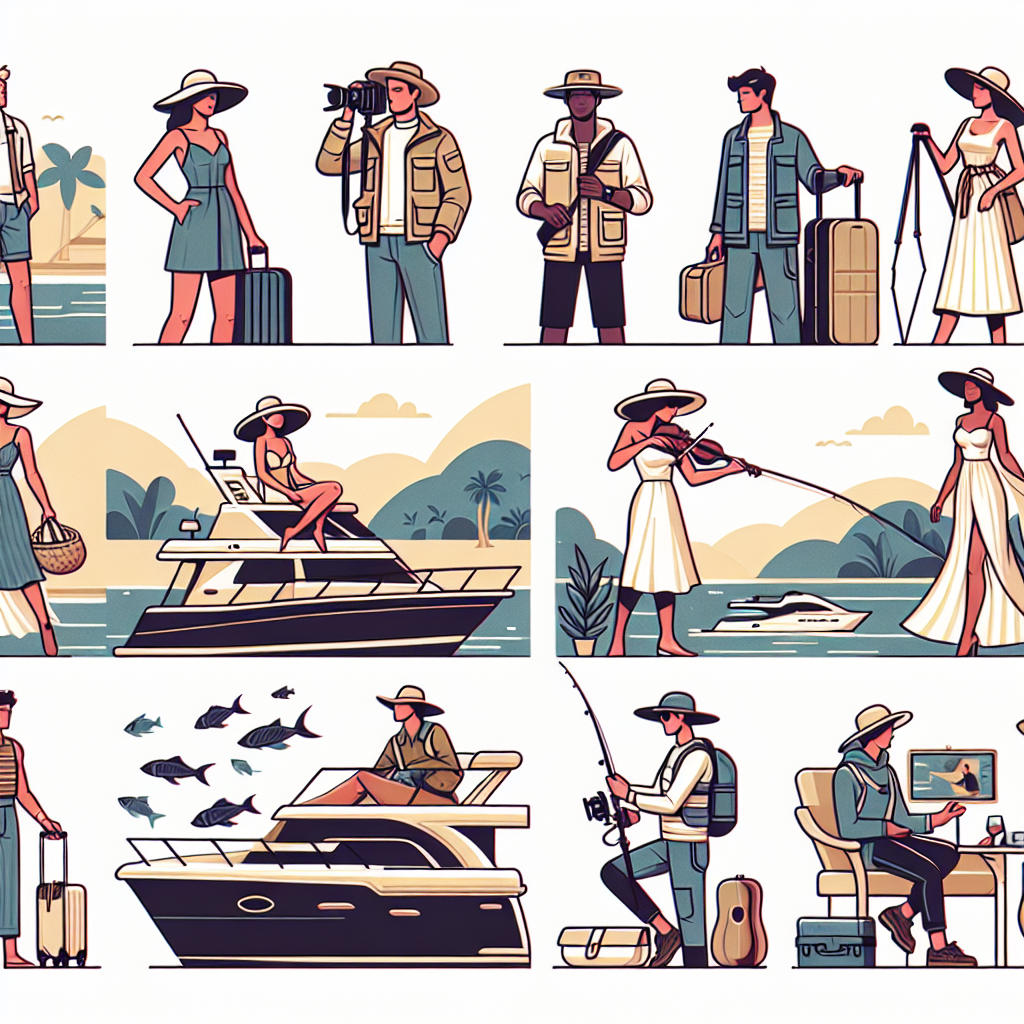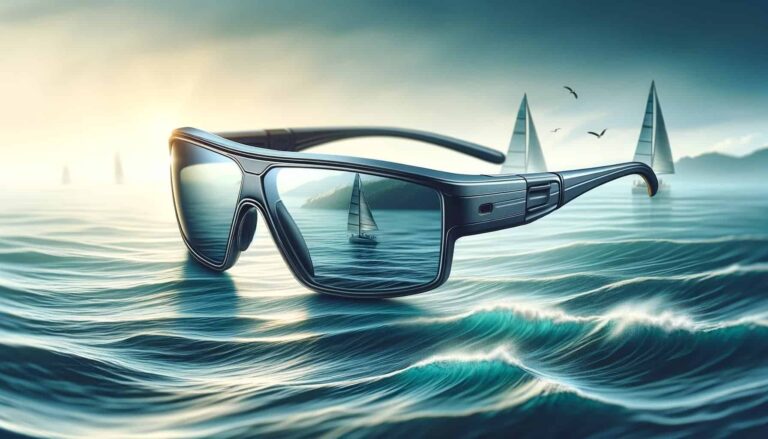Mastering What To Wear On A Boat
Heading out for a day on the open water is always an exciting adventure, but figuring out what to wear can sometimes be a challenge. Whether you’re cruising on a yacht, fishing on a charter boat, or simply enjoying a leisurely ride, dressing appropriately is key to ensuring a comfortable and enjoyable experience.
From practical considerations like weather conditions and activities to style tips that will have you looking effortlessly nautical, this article has got you covered when it comes to knowing what to wear on a boat.

Importance of suitable attire
Why right clothing matters
When it comes to boating, wearing the right attire is not just a matter of fashion, but also a matter of practicality and safety. Your choice of clothing can impact your overall experience on the water, whether you’re on a day cruise, an evening cruise, or even fishing or sailing.
It’s important to consider various factors such as weather conditions, comfort, and any specific dress codes that may apply. By selecting suitable attire, you can ensure that you’re prepared for any situation that may arise while boating.
Safety implications
One of the primary reasons to choose suitable attire for boating is safety. When you’re out on the water, your clothing should not impede your ability to move freely or hinder your safety equipment, such as life jackets.
It’s crucial to avoid loose-fitting clothing or items with long straps that can get caught in machinery or rigging. Additionally, wearing bright colors or garments with reflective elements can enhance your visibility, making it easier for others to spot you in case of an emergency.
Comfort considerations
Aside from safety, comfort is another crucial aspect to consider when choosing boating attire. Spending extended periods on a boat can be physically demanding, and wearing uncomfortable clothing can greatly affect your enjoyment.
Opt for clothing made from breathable and moisture-wicking materials, such as cotton or synthetic blends, to help keep you cool and dry. Avoid clothes that may chafe or constrict your movements. Prioritizing comfort will allow you to fully relax and enjoy your time on the water.
Weather conditions and dressing
Dressing for warm weather
When boating in warm weather, it’s important to dress in a way that keeps you cool and protected from the sun. Lightweight and breathable clothing, such as shorts and t-shirts, are ideal for maximizing airflow and minimizing discomfort.
Consider wearing a wide-brimmed hat to shield your face and neck from the sun’s rays, and don’t forget to apply sunscreen regularly. It’s also a good idea to have a lightweight cover-up or sarong for added protection if needed.
Dressing for cold weather
Boating in cold weather requires a different approach to dressing. Layering is key to staying warm and adjusting your clothing as needed. Start with a moisture-wicking base layer, such as thermal underwear, to keep you dry.
Add insulating layers like sweaters or jackets, and finish off with a windproof and waterproof outer shell. Don’t forget to wear warm socks, gloves, and a beanie to protect against the cold. Remember to dress in loose-fitting layers to allow for ease of movement.
Rain clothing
Rain can quickly turn a pleasant boating trip into a damp and uncomfortable experience. Having appropriate rain gear is essential for staying dry and comfortable. Invest in a waterproof jacket or poncho with sealed seams to keep the rain out.
Pair it with waterproof pants or overalls to provide complete protection. Additionally, consider wearing waterproof shoes or boots to keep your feet dry. Being prepared for unexpected rain ensures that you can continue enjoying your boating adventure regardless of the weather.
Factor in wind and sun exposure
When boating, it’s important to consider the potential effects of wind and sun exposure on your clothing choices. Wind can make the temperature feel colder and increase the need for extra layers. Opt for wind-resistant materials and clothing that can be easily adjusted or secured, such as jackets with adjustable cuffs or hoods.
Similarly, protect yourself from the sun’s rays by wearing clothing with a high UPF (Ultraviolet Protection Factor) rating, and don’t forget to wear sunglasses and apply sunscreen to exposed skin.
Basic Clothing Items Essential
Boating shoes
Proper footwear is crucial when boating to ensure your safety and comfort. Invest in a pair of boating shoes that offer good grip, are non-slip, and have a sturdy sole to prevent accidents on wet surfaces.
Look for shoes made from breathable and quick-drying materials such as mesh or canvas. Avoid shoes with dark-colored soles that may leave marks on the boat’s deck. Having the right footwear will give you stability and traction while moving around the boat.
Swimsuits
Whether you’re planning on taking a dip in the water or simply lounging on the deck, having a swimsuit is essential for a boating trip. Choose a swimsuit that suits your style while providing comfort and freedom of movement. Consider options with built-in UV protection to safeguard your skin against the sun’s harmful rays.
Lightweight layers
Boating often involves fluctuating temperatures, so having lightweight layers is key to adapting to changing conditions. Pack lightweight and versatile items such as lightweight long-sleeve shirts and cardigans. These layers can be easily added or removed as needed, ensuring your comfort throughout the day.
T-Shirts and Shorts
T-shirts and shorts are go-to clothing items for boat trips, especially in warm weather. Stick to breathable fabrics and avoid heavy cotton materials that can become uncomfortable when wet. Opt for quick-drying materials that won’t leave you feeling damp for long periods.
Jackets or Sweaters
Even in warm weather, the temperature can drop once the sun sets or when the boat is moving at higher speeds. It’s always a good idea to have a lightweight jacket or sweater on hand to keep you warm and comfortable during these moments. Choose options that can be easily packed and don’t take up too much space.
Full-length pants
Bringing a pair of full-length pants is a wise choice when boating, as they offer protection against sun exposure and cooler temperatures. Look for lightweight and breathable options such as linen or lightweight cotton pants. These will provide both comfort and versatility throughout your boating adventure.
Dressing for Day Cruises
Daytime attire overview
Day cruises often call for a more casual and relaxed dress code. Comfort should take precedence, so opt for lightweight and breathable clothing. T-shirts, shorts, and comfortable footwear such as boat shoes or sandals are popular choices. Remember to dress in layers to accommodate changing temperatures.
Perks of casual clothing
Casual clothing is not only comfortable but also allows you to fully embrace the laid-back boating atmosphere. You can easily move around the boat, engage in water activities, and relax without feeling restricted. Casual attire also promotes a sense of camaraderie among fellow boaters, fostering a more inclusive and relaxed environment.
Jewelry and accessories considerations
When dressing for a day cruise, it’s best to keep jewelry and accessories to a minimum. Avoid wearing valuable or sentimental pieces that could be lost or damaged while boating.
Opt for simple and lightweight accessories that won’t interfere with your enjoyment or safety. Remember to secure any loose items such as hats or sunglasses to prevent them from going overboard.

Dressing for Evening Cruises
Considerations for dressing up
Evening cruises often call for a more formal or dressier attire compared to day cruises. Consider the specific event or occasion and adhere to any dress codes provided. Opt for elegant and sophisticated clothing choices such as a cocktail dress for women or dress pants and a button-down shirt for men.
Temperature drop in the evening hour
Evenings on the water can bring a drop in temperature, especially once the sun sets. Consider bringing a lightweight jacket or wrap to keep warm as the night progresses. It’s always better to have an extra layer to slip on to ensure your comfort throughout the evening.
Formal wear if required
Some evening cruises, particularly those for special events or occasions, may require formal attire. In such cases, it’s important to follow the dress code guidelines provided.
For women, this may mean wearing a floor-length gown or an elegant cocktail dress. Men may be required to wear a tuxedo or a formal suit. It’s important to plan and prepare accordingly to meet the specified dress requirements.
Dressing for Sailing
Foul-weather gear essentials
When preparing for a sailing trip, it’s important to have the necessary foul-weather gear in case of inclement weather. Invest in a high-quality waterproof and windproof jacket and pants with sealed seams to keep you dry and protected.
Look for options that offer ventilation to prevent overheating. Remember to choose gear that allows for ease of movement to handle the various tasks involved in sailing.
Soft luggage for stowing gear
To ensure smooth sailing, it’s essential to stow your gear properly. Invest in soft-sided luggage or duffel bags that can be easily collapsed and stored when not in use. Soft luggage reduces the risk of damage to the boat and provides flexibility in storing items securely.
Non-slip footwear
Sailing involves moving around on a boat that may become wet and slippery. It’s important to wear non-slip footwear to prevent accidents and maintain stability. Look for deck shoes or sailing boots with non-marking soles designed specifically for boating. These shoes typically have good traction and are designed to prevent slipping on wet surfaces.
Clothing materials to avoid
Certain clothing materials should be avoided when sailing due to their potential to become uncomfortable or dangerous. Avoid wearing denim, as it tends to retain moisture and become heavy and restrictive when wet.
Similarly, materials such as silk or satin can be easily damaged by saltwater and may not provide adequate protection against wind and spray.
Dressing for Fishing Trips
Specialized fishing wear
When embarking on a fishing trip, having specialized fishing wear is essential for comfort and functionality. Look for clothing made from quick-drying and moisture-wicking materials that offer protection against UV rays.
Fishing shirts with built-in SPF and long sleeves are ideal for shielding yourself from the sun. Additionally, consider shorts or pants with reinforced knees and seat for added durability and protection.
Hat and sunglasses
Protection from the sun is crucial during fishing trips, as you’ll likely spend extended periods exposed to its rays. Wear a hat with a wide brim to shield your face, ears, and neck from the sun. Pair it with polarized sunglasses to reduce glare and protect your eyes from harmful UV rays, while enhancing your visibility in the water.
Insulated clothing
Fishing trips can take you to different environments with varying temperatures, so it’s important to have insulated clothing on hand. Layering is key to adapting to changing weather conditions.
Have a combination of lightweight and insulating layers, such as fleece jackets or vests, to keep you warm when needed. Don’t forget to have a waterproof and windproof outer layer for protection against the elements.
Rain and windproof gear
Fishing trips can be affected by unexpected rain or windy weather. Consider investing in high-quality rain gear such as waterproof jackets and pants with sealed seams to keep you dry.
Look for options with adjustable hoods and cuffs for added protection. Additionally, ensure your rain gear is windproof to shield you from gusts and maintain your comfort while fishing.
Sun Protection Clothing
Hats
Hats provide an easy and effective way to protect your face, scalp, and neck from the sun’s rays. Opt for wide-brimmed hats that offer shade and shield your skin from direct exposure. Look for lightweight and breathable materials that won’t cause discomfort or lead to overheating.
Sunscreen
Sunscreen is a vital component of sun protection when boating. Choose a broad-spectrum sunscreen with a high SPF (Sun Protection Factor) and apply it generously to all exposed skin, including your face, ears, neck, and hands. Remember to reapply regularly, especially after swimming or sweating.
Sunglasses
Protecting your eyes from the sun’s harmful UV rays is crucial, especially when spending extended periods on the water. Wear sunglasses with good UV protection and polarized lenses to reduce glare and improve visibility.
Look for sunglasses that are specifically designed for water activities, as they often offer enhanced durability and resistance to water splashes.
UPF clothing
UPF (Ultraviolet Protection Factor) clothing provides an additional layer of sun protection. Look for clothing with a UPF rating, which indicates the amount of UV radiation that can pass through the fabric.
A higher UPF rating means better sun protection. Opt for lightweight and breathable UPF clothing to keep you cool and protected throughout your boating adventures.

Understanding the boat dress code
Formality levels
Boat dress codes can vary depending on the type of boat, the occasion, and the expectations of the host or charter. It’s important to understand the formality level associated with the boat you’ll be on to ensure you dress appropriately.
Some boats may have a more casual dress code, while others may require more formal attire for certain events or occasions.
Understanding ‘yacht casual’
Yacht casual is a common dress code for boating that strikes a balance between casual and formal attire. It typically means dressing in a neat and well-groomed manner while still maintaining a relaxed and comfortable look.
Yacht casual often involves wearing items such as polo shirts, sundresses, khaki pants, and boat shoes. It’s important to adhere to any specific guidelines provided by the boat owner or event organizer when dressing in a yacht casual style.
Event-specific dress codes
Certain events or occasions may have specific dress codes that go beyond the standard boat dress code. It’s essential to understand any specific requirements and dress accordingly.
For formal events, men may be expected to wear suits or tuxedos, while women may need to wear formal gowns or cocktail dresses. Pay close attention to any dress code instructions provided to ensure you’re dressed appropriately for the occasion.
Fashion tips for boating
Mixing comfort with style
Boating attire can be both comfortable and stylish. Seek clothing that allows for ease of movement while incorporating elements of your style. Look for garments with interesting patterns, vibrant colors, or unique features that make a statement while offering the functionality and comfort necessary for a day on the water.
Choosing colors
When it comes to boating attire, choosing the right colors can enhance your overall experience. Lighter colors tend to reflect sunlight and keep you cooler, so consider wearing whites, pastels, or other light shades.
Dark colors can absorb heat, so they’re better suited for cooler weather or evening cruises. Additionally, consider choosing colors that complement your skin tone and personal style.
Accessorizing
Accessorizing is a fun way to enhance your boating outfit while adding practical elements. Sunglasses, hats, and lightweight scarves can protect you from the sun while adding style.
Opt for waterproof and durable accessories, such as waterproof watches or jewelry made from materials that won’t tarnish in water. Just remember not to overdo it and keep your accessories minimal and comfortable.
Tips for looking great in photos
Capture your boating memories in style by considering a few tips for looking great in photos. When posing for pictures, stand tall and relax your shoulders to maintain good posture. Keep your head up and chin slightly lifted to avoid double chin effects.
Be mindful of your surroundings and ensure that your clothing and accessories are well-coordinated. Most importantly, let your genuine smile and enjoyment shine through to create beautiful and lasting memories.
Footwear considerations
Footwear plays a significant role in completing your boating outfit. Opt for footwear that is functional, comfortable, and suited for the type of boating activity you’ll be engaged in.
Boat shoes, sandals, or water shoes are popular choices that offer good grip and are designed to withstand the water and deck conditions. Avoid wearing heavy or inappropriate footwear that may damage the boat or compromise your comfort.
By considering the importance of suitable attire, dressing according to weather conditions, and understanding boat dress codes, you can ensure that you’re well-prepared and appropriately dressed for any boating adventure.
Prioritize safety, comfort, and practicality while embracing your style to make the most of your boating experiences. With the right attire, you’ll be ready to sail, fish, or simply relax on the deck while looking and feeling great.




